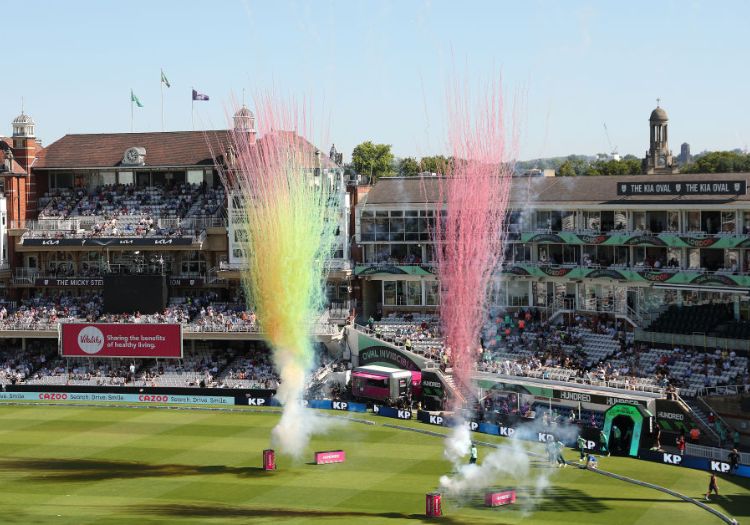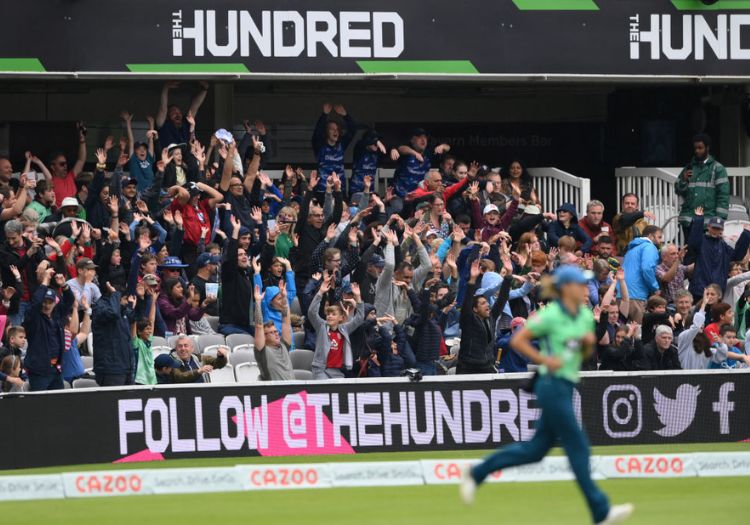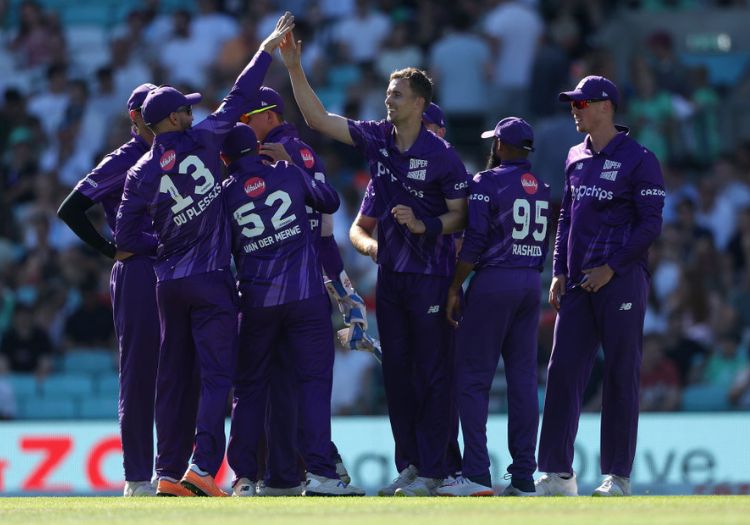NICK HOWSON: For the first time in The Hundred, it is the women's match of a double-header that gets the prime time evening slot. This can't be a one-off experiment

Listening to Beth Barrett-Wild, head of the women's Hundred, before the second edition of the competition, you couldn't help but feel that pushing a women's match to the headline slot in the double-headers took some work.
Do not forget that back-to-back matches at the same venue were not part of the original blueprint of the 100-ball tournament. It was given birth to by the Covid-19 pandemic with the ECB keen to negate "operational risk".
It was ludicrous that two sides supposedly from the same franchise would play at two different grounds while the tournaments were being staged simultaneously. It would have provided a disparate feel to the entire affair, even if it meant the tournament was spread more evenly around the country.
It was an indisputable highlight of the inaugural edition of a competition that remains the most divisive subject in English cricket. And however the authorities got there, it was another step towards equity across both genders, alongside equal prize money.
Attendance records tumbled across the summer, climaxing with the highest domestic crowd for a women's game of 17,116. Another 1.4 million tuned in on TV. It confirmed there is interest in the women's game to rival the men.
As women's football is being charged with following England's Euro 2022 triumph, converting that interest into a tangible impact on the game is now the challenge.

A new women's domestic record was set during last year's women's final (Stu Forster/Getty Images)
Before participation numbers and accessibility can be properly scrutinised, harnessing that momentum would have been one way of building on last year's success. And flipping some of the fixture list represented an open goal even Diana Ross would have converted.
The Commonwealth Games means the women's competition is smaller and shorter than the inaugural edition. Dictated by circumstance perhaps, not least a desire to fit the tournament into what remains of the school summer holidays, but year two sees the competition downsized. There is no getting away from that.
Promoting the women's matches into the prime time slot each evening would have achieved something close to fairness, given the reduced schedule. It feels like a natural step and an easy way to build on an already impressive audience.
Barrett-Wild is convinced "it is going to look brilliant, and feel brilliant" and yet on just a single evening, the opening game no less, do the women's get top billing.
"The whole double-header model we saw how positive and impactful it can be for women's cricket so we are cautiously optimistic over the attendances at women's matches," she added.
"Double-headers were introduced due to Covid, equal prize money after criticism over the salary gap and the refund policy re-written after accusations of sexism. There has been zero initiative shown"
"We're going to use that opening game as an opportunity to see what happens. We have aspirations for the women's competition to be as big as it could possibly be so we'll see how we go and we'll look at 2023 off the back of that.
But matches being configured this way suggest the ECB are more "cautious" than "optimistic". They come no more enthusiastic and passionate about women's sport than Barrett-Wild - she attended the final at Wembley last month - but that sadly isn't reflected in the schedule. We can only speculate as to why.
Billing this Kia Oval double-header as an experiment after last year's success is frankly an insult. And surely a proper test needs to be more prolonged than a single evening on a scorching mid-August afternoon in south London.
Much of the debate around The Hundred and its impact is around how it will negatively impact the men's game, with not enough focus on the benefits to the women's game. Is this reflected in the pragmatic scheduling, too?
Despite the undeniable interest, this still feels like a women's competition sharing the stage with the men when it suits. 'Market forces' is often used as a defence of women's sport being sidelined. In this case, even incontrovertible data is being ignored.

The men's competition has been disappointingly uncompetitive (Julian Finney/Getty Images)
Oval Invincibles vs Northern Superchargers will likely break last year's Lord's record. And yet we're back to the status quo from tomorrow. Even the Eliminator at The Ageas Bowl won't be swapped.
Double-headers were introduced due to Covid, equal prize money after criticism over the salary gap and the refund policy re-written after accusations of sexism. There has been zero initiative shown. A solitary evening game over a three-and-a-half-week event is a token gesture.
There should certainly be no concerns about quality, given the inauspicious start to the men's competition. Just two of the opening nine games (both at the same venue) has been remotely competitive, and even then London Spirt won a game they dominated for long periods.
Speaking before the start of play, former England captain Nasser Hussain told Sky Sports: "The tournament has lacked something in the last 10 days and what they've lacked is the women putting on a show.
"Double-headers are the way to go. The women taking the centre stage later tonight, that is the way to go in the future as well. They deserve their place as top-billing."
The Hundred is being upheld as an example of the gap narrowing between men's and women's elite sport, a framework that others should follow. But this oversight highlights that there is still plenty of progress to be made.